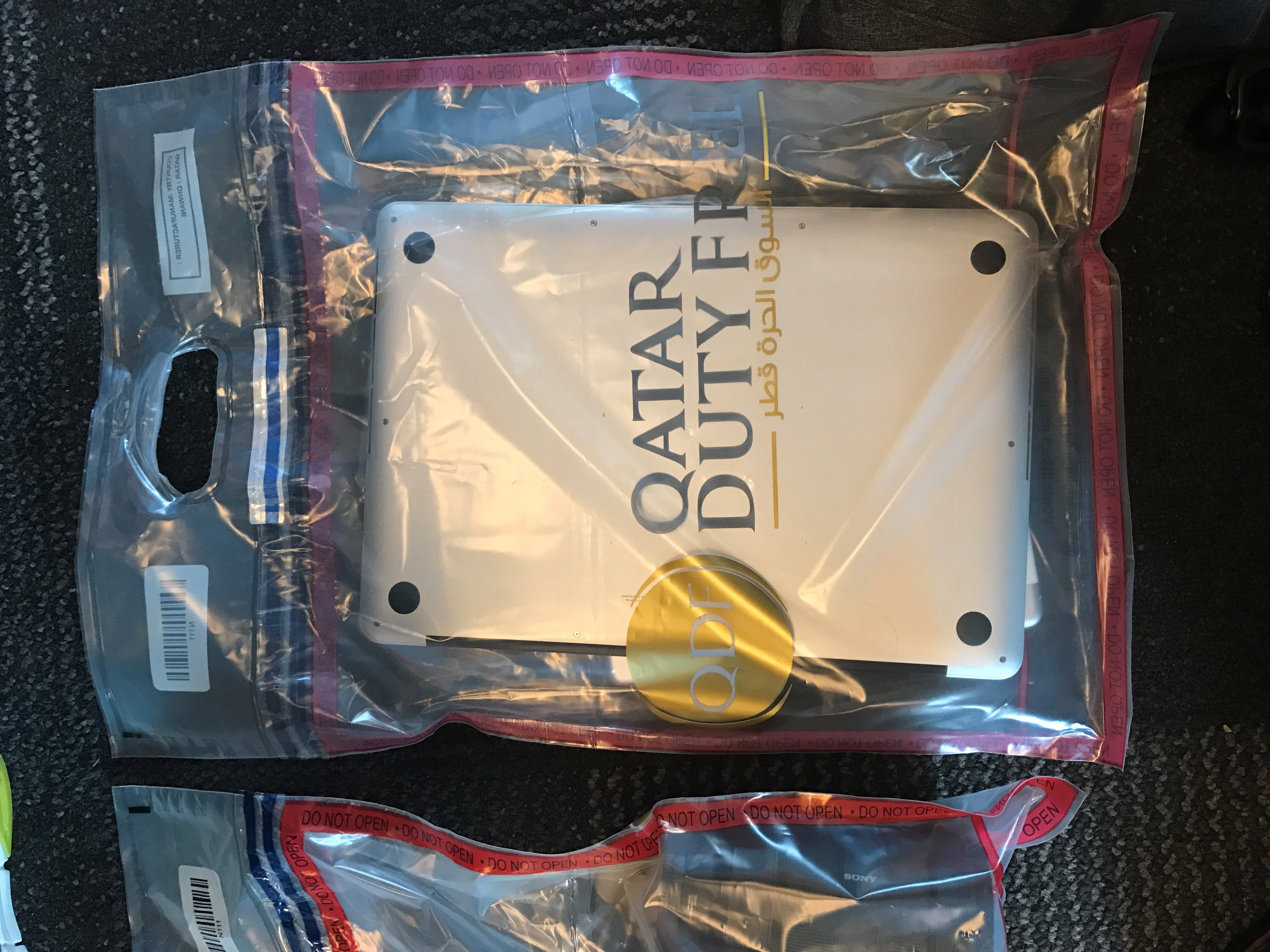A couple of weeks ago the US declared that not only wouldn’t they extend the ban on electronics larger than a standard cell phone to European flights, but they’d remove it from flights coming from Mideast airports, provided each airport around the world changed its security procedures to U.S. specifications.
The ban has been lifted from a majority of countries where it had earlier been imposed. It remains in place for Royal Air Maroc flights from Casablanca, Morocco and Saudia flights from Jeddah and Riyadh although Saudia has said the ban will be lifted on them in a matter of days.
However there are new security procedures in place in airports where the ban had previously been in effect.

Credit: Hans Mast
Hans Mast shares what the procedures are like in Doha flying Qatar.
They’re asking before you enter gate side security whether you have electronic devices larger than cellphone and then they shunt you into separate line where you remove all aforementioned electronics.
They use explosive trace detector (Smith Ionscan 500DT) on all those electronics and then they seal them into a duty free bag with a sealing sticker and send you through regular gate side security procedures.
Once you go through that, you’re allowed to remove your electronics from Duty Free bag and repack.

Credit: Hans Mast
All of the new procedures are costly — billions of dollars across more than 200 airports airports and each day’s flights. Explosive trace detection equipment alone costs $25,000 to $50,000 per individual unit and of course those units have to be staffed. 3-D scanners for checking luggage are far more expensive. Some airports will have to create physical modifications to ensure new procedures are targeted at U.S. flights.
Hopefully this is a response to a real high probability threat and these techniques are both targeted and effective. Selfishly though I’m just glad not to have to travel on flights with large quantities of lithium ion batteries in the cargo hold.


We flew Doha to Los Angeles two days ago on Qatar. Here’s the process we experienced.
– Approaching the gate we were asked if we had electronics larger than a cell phone. Yes, so we were directed into a roped off area, not segmented by cabin class.
– We waited in that line to get to some tables where we first presented our boarding passes and passports, then our computers, iPads, Kindles and cameras. The security people turned them all on and swabbed each and put the swabs through the explosives detection equipment.
– We passed. All of the items were placed in a single bag. It was sealed and then sealed again with a special sticker.
– We proceeded about 5 steps in the roped off lanes to someone who checked our boarding passes and passports.
– We proceed about 10 steps to the standard metal detector process. Removing liquids, belts, shoes, etc. and placing our plastic bags in a bin of their own.
– Immediately after gathering our belongings post-metal detector our passport and boarding pass was checked again.
– We stepped about 5 steps and both passport and boarding passes were checked again.
– We were then allowed into the glass-walled boarding area.
At that point it was unclear what we were to do with the plastic-bagged electronics. Most people were just carrying them, thinking they had to keep there until onboard. I went back to the last checkpoint and asked the person if we could remove them from the bag. He said yes, so we did so, and repacked into our carryons.
Given that the area was roped off and closely monitored by security — and it was stated more than once that if you stepped out of the area you would start the process again from the beginning — the plastic bags served little purpose beyond theatrics.
But then, if not so formal and security-ish people might think this whole thing was a charade from the beginning. Hmmm.
Boarding passes and/or passports were checked, in total (including immediately upon deplaning in LAX, but not including the flight attendant upon boarding) — six times.
In all, departure, and arrival into the gate at LAX, were each delayed about an hour past the schedule.
@Alan. What you wrote reminds me of Get Smart. Did you see the Cone of Silence anywhere in the boarding area?
@Just Saying. I must admit, I am old enough for that reference. That’s a perfect analogy. I had to have had a dumbfounded look on my face throughout as it truly had a, “is this REALLY happening?” feel to it. As checker number five asked if he could see my boarding pass and passport I handed it to him and said, “Sure — everyone else has!” He rolled his eyes and laughed.
For another ancient reference, boarding pass check number six could easily have been Allen Funt pointing at a hidden camera. Well, other than the fact he’s likely long dead.
@Alan. Wow Candid Camera. That was a great show. I guess the modern version is The Carbonaro Effect.
I counted seven boarding pass checks at Doha, though sdmittedly one was aboard the plane as an FA directed people to seats. Note that this was for a connection, not for a person originating at Doha. Loved Get Smart and Candid Camera.